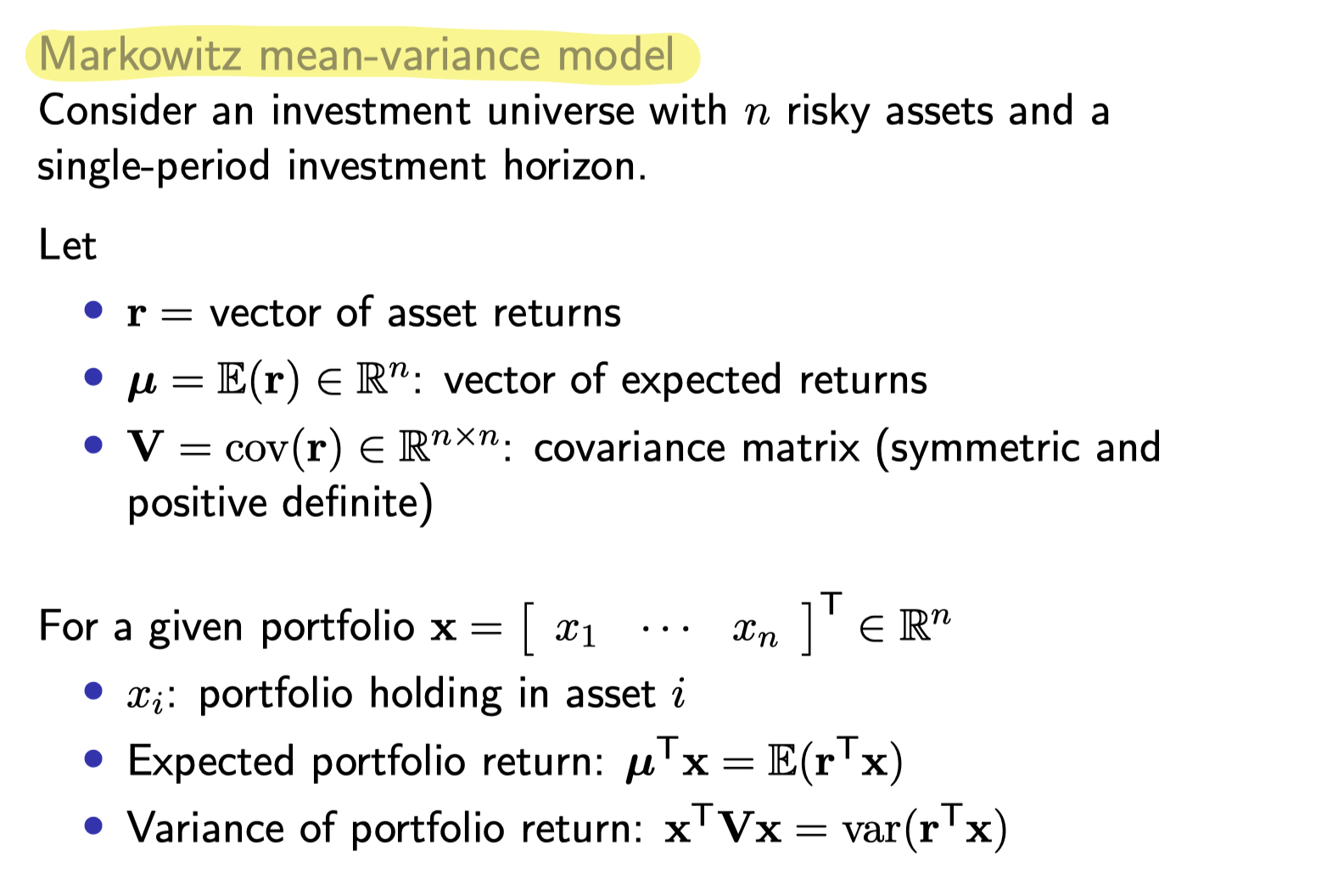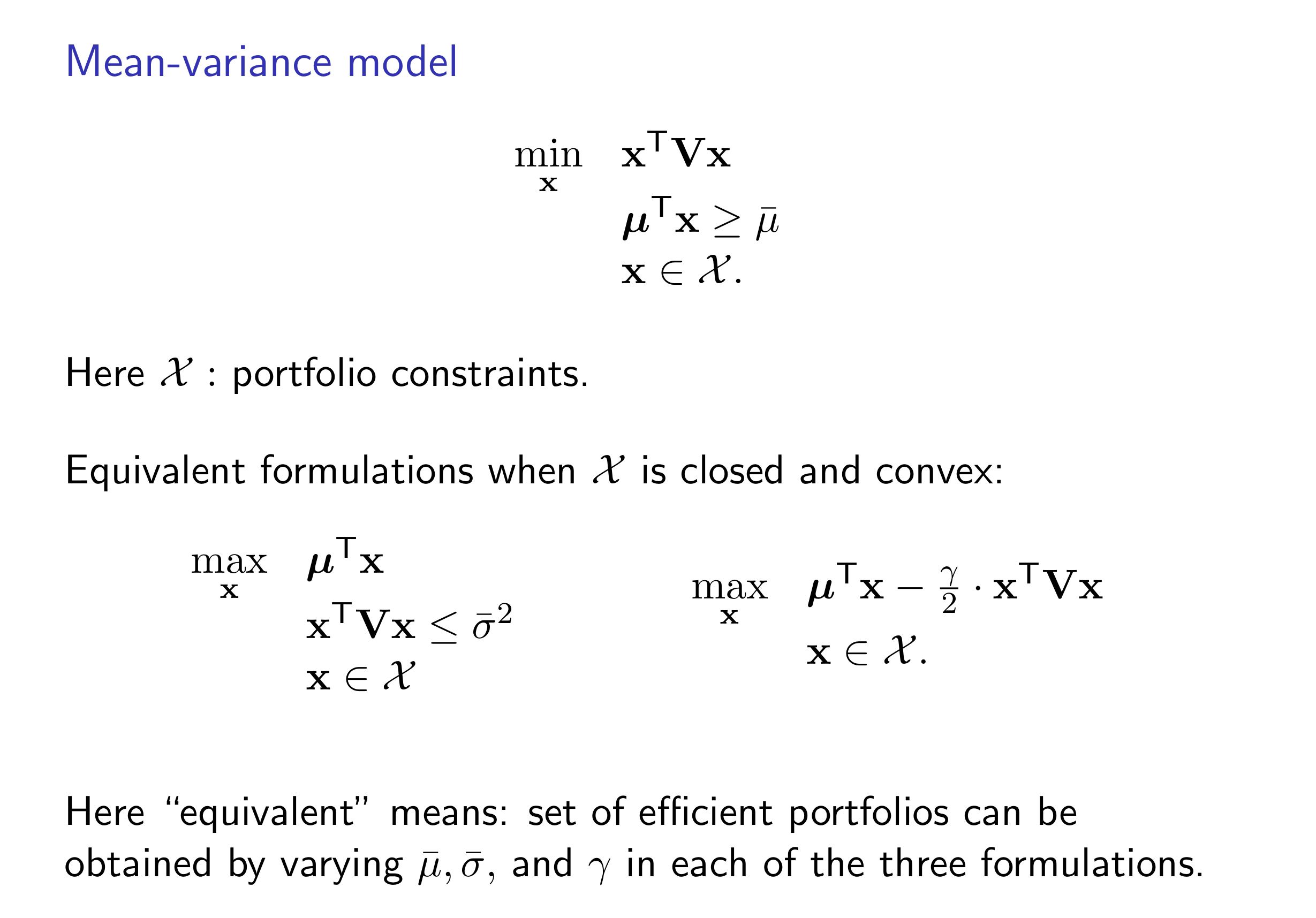Mean Variance Portfolio
Mean Variance Portfolio
For the variance of the portfolio return, notice that the vector of asset returns \(\mathbf{r}\) is the vector of random variable, instead of the allocation vector \(\mathbf{x}\). Recall the following to see why the matrix form makes sense,
\[
\mathbf{x}^{\top} \mathbf{V} \mathbf{x}=\sum_{i=1}^n \sum_{j=1}^n \sigma_{i j} x_i x_j=\sum_{i=1}^n \sigma_{i i} x_i^2+2 \sum_{i=1}^n \sum_{j=i+1}^n \sigma_{i j} x_i x_j
\]
Minimum-Variance Fully-invested Portfolios
In the previous "two special cases" discussion, we showed that the following problem,
\[
\begin{array}{ll}
\min _{\mathbf{x}} & \mathbf{x}^{\top} \mathbf{V} \mathbf{x} \\
& \mathbf{1}^{\top} \mathbf{x}=1
\end{array}
\]
Has a solution \(\mathbf{x}^{\star}=\frac{1}{\mathbf{1}^{\top} \mathbf{V}^{-1} \mathbf{1}} \mathbf{V}^{-1} \mathbf{1}\).
Maximizing the Sharpe Ratio
The Sharpe ratio of portfolio,
\[
\frac{\mathbb{E}\left(\mathbf{r}^{\top} \mathbf{x}\right)}{\sigma\left(\mathbf{r}^{\top} \mathbf{x}\right)}=\frac{\boldsymbol{\mu}^{\top} \mathbf{x}}{\sqrt{\mathbf{x}^{\top} \mathbf{V} \mathbf{x}}}
\]
To do this optimization problem, we need to transform it into a convex problem, by allowing \(z=\kappa x\), and solve the following,
\[
\begin{array}{cl}
\min _{\mathbf{z}, \kappa} & \mathbf{z}^{\top} \mathbf{V} \mathbf{z} \\
\text { s.t. } & \boldsymbol{\mu}^{\top} \mathbf{z}=1 \\
& \mathbf{A} \mathbf{z}-\mathbf{b} \kappa=0 \\
& \mathbf{D z}-\mathbf{d} \kappa \geq 0 \\
& \kappa \geq 0 .
\end{array}
\]

